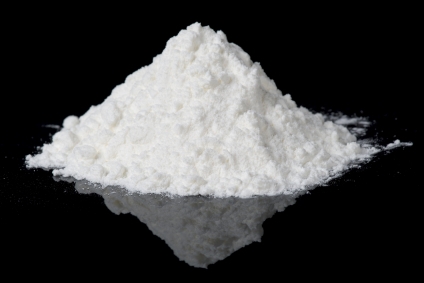There appears to be some confusion about how to supplement with Creatine. Some protocols recommend a loading phase followed by a maintenance phase while others question the necessity of a loading phase. The aim of this article is to shed light on this topic. Please keep in mind that in this article we are referring to Creatine Monohydrate and not novel forms of Creatine and Creatine formulations. Future articles will deal with these topics in greater detail.
Therefore, the present article will address the following:
a) the aim of creatine supplementation
b) an evaluation of the traditional loading-maintenance phase
c) an evaluation of the low dose-no loading protocol
d) an evaluation of whether you need to cycle Creatine supplementation
Creatine supplementation & muscle creatine levels
——————————————————————————–
When taking a supplement it is very important to understand the reason why you are taking it and what it does in the body. Creatine supplementation serves to increase the concentration of Creatine in muscle. Keep in mind that muscle already contains Creatine in the form of Phosphocreatine, the latter serving as a quick source of ATP (energy). This quick source of energy helps to fuel the production of muscle force during repeated, short bouts of powerful muscle activity as in a bodybuilding workout. As the aim of Creatine supplementation is to increase the muscular Creatine concentration, the best supplementation strategy is the one which increases muscle Creatine level most effectively.
The amount by which supplementation will increase your muscle Creatine level depends on how much Creatine is already present before supplementation. If you have low muscle Creatine levels, resulting from low intakes (e.g if you are vegan or consume little meat or fish) then you can expect a massive increase in Creatine levels with supplementation, usually between 20 to 40%. Conversely, if your stores are already high then the magnitude of the increase in Creatine levels will be about 10-20% (1). This increase is important because “the effect you feel” on Creatine supplementation is largely related to how much your muscle Creatine has increased by.
Protocol A: The Loading-Maintenance Protocol
————————————————————————-
This is the typical Creatine supplementation protocol that most of you are familiar with. It consists of a loading phase of 0.3 g CM/kg/d split into 4 daily intakes of 5 g each, followed by a maintenance phase of 0.03 g CM/kg/d for the duration of the supplementation period.
Using the above formula, a 100kg man would need the following:
Loading: 0.3g x 100kg = 30g/ day. Divided into 4 intakes of 7.5g each
Maintenance: 0.03g x 100kg = 3g/ day.
The pros and cons of the Loading-Maintenance protocol
Loading seems to be a useful strategy because of the rapid rise in muscle Creatine levels that it brings about. This rapid rise means that the performance benefits of Creatine are felt rather quickly, according to research done on athletes by leading Creatine researcher Dr. Paul Greenhaff (2). One downside of this protocol is that it can prove quite costly, especially if you are investing in a high quality Creatine product, which you should. A loading phase can set you back by 100-150g in just 5 days. I speak for the poor man always. A loading phase means that you will need to make trips to the kitchen to mix and drink your Creatine several times a day, an inconvenience perhaps if you work. Ingesting large amounts of Creatine during the loading phase may give you gastrointestinal distress especially if the Creatine hasn’t well dissolved.
The good news is that additional research has shown that the loading protocol may be shortened to only 2–3 days, especially if you are taking Creatine along with protein and/or carbohydrate. As a side note, ingesting Creatine with protein and/or carbohydrate may improve the absorption of Creatine (3). A future article will deal with the effect of co-ingesting other nutrients on Creatine absorption.
Protocol B: The “No Loading” Protocol
———————————————————–
A nice alternative to the loading-maintenance protocol is to start by taking 3g per day for 28 days, with no loading phase (4). Research has shown that this method can increase muscle Creatine levels as effectively as the loading-maintenance protocol. The only downside is that this method results in a rather slower increase in muscle Creatine level compared to the loading-maintenance protocol. It may take longer for any performance benefits to be seen. But that depends on the person as I have puts lots of people on a “no load” protocol who reported rapid performance improvements. You may wish to do some trial and error yourself. Personally, I respond much better to the traditional loading-maintenance protocol.
Do you need to cycle Creatine?
———————————————-
Cycling of Creatine supplementation has been recommended because apparently the ability of the body to manufacture its own Creatine drops when you supplement with Creatine (5). Although this is possible, the levels of Creatine in muscle returns to starting (baseline) levels when you stop supplementing. It does not decrease below baseline levels. I don’t believe that cycling Creatine has any benefit besides to your pocket because Creatine isn’t cheap. Taking Creatine on a continuous basis may confer health benefits.
Practical applications:
———————————-
The loading-maintenance protocol works well and I would recommend it if you want results fast and money isn’t a problem.
The “no-loading” protocol works as well although you may wait a bit longer to see the results. But it is a good protocol.
There is no need to cycle off Creatine. Cycle off only when your pocket does not allow.
Make sure you dissolve your Creatine in water before drinking it. Do not throw the Creatine in your protein shake because it won’t dissolve well. Protein and carbs help absorb the Creatine better.
by Vic Veeraj Goyaram (africanmuscle)



Post your comment